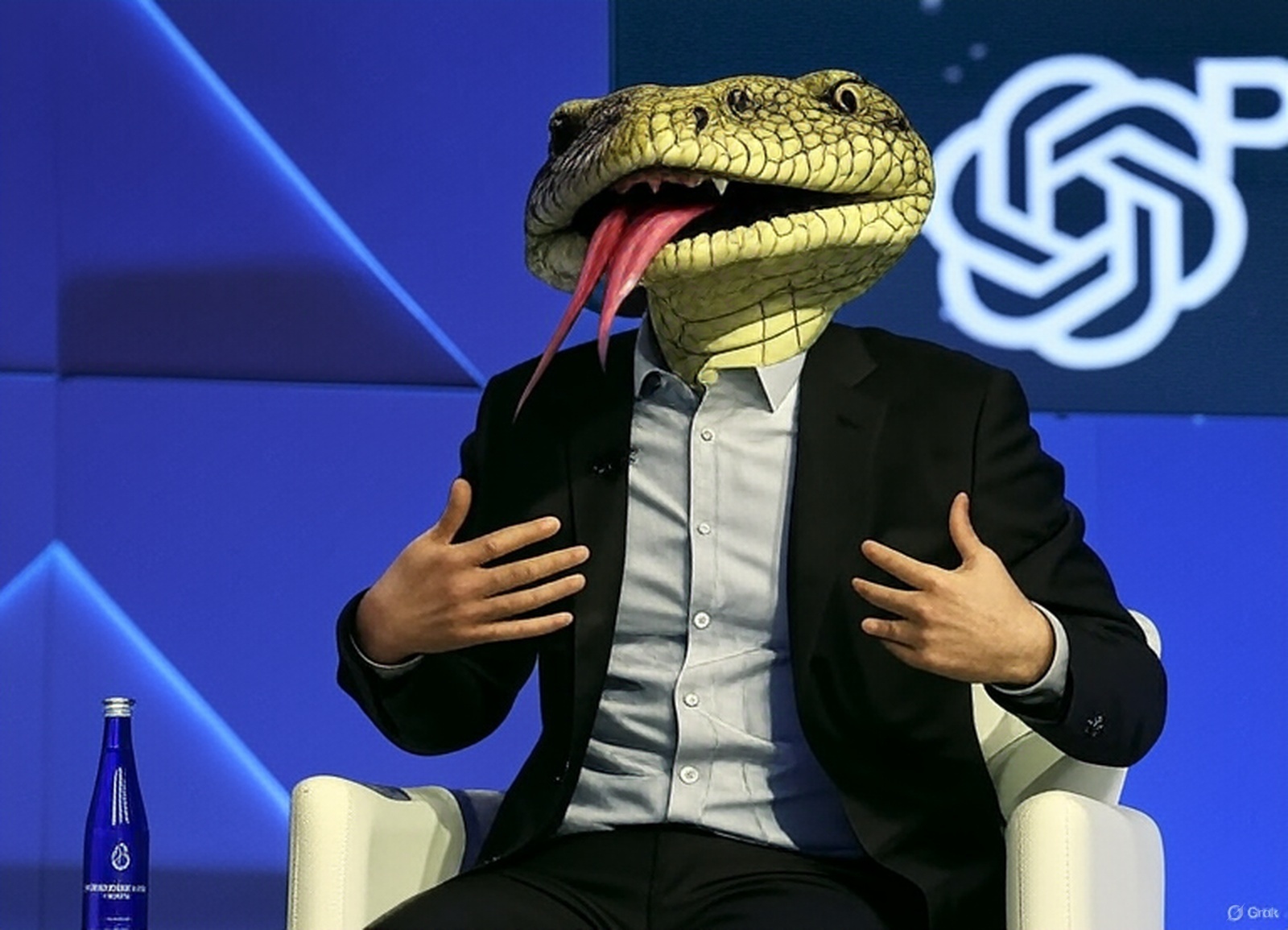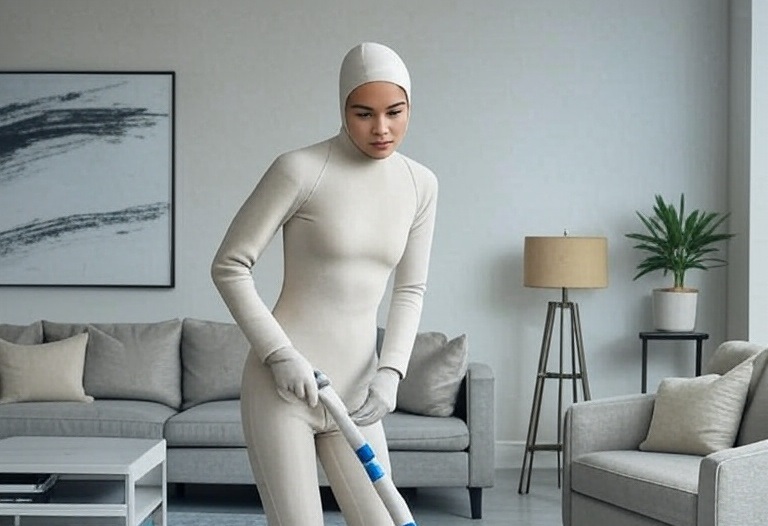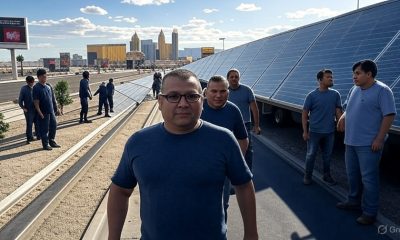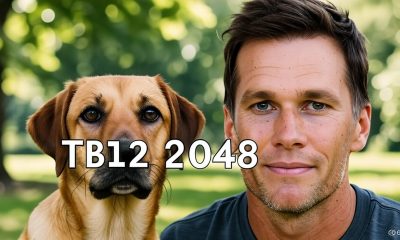Tech
LinkedIn Introduces ‘Humblebrag 2.0’ Feature to Auto-Generate Cringe-Worthy Posts

In a seismic shift destined to redefine corporate narcissism, LinkedIn has unleashed its latest innovation: Humblebrag 2.0, an AI-powered feature that auto-generates posts so cringe-worthy they could make a motivational poster blush. Unveiled at a glittering virtual gala hosted by LinkedIn’s CEO, who appeared in a holographic suit made of pure buzzwords, the feature promises to “elevate personal branding to stratospheric heights of self-aggrandizement,” leaving users free to focus on what really matters: perfecting their headshot’s sepia filter.
As Silicon Valley’s glitterati Zoomed in from their minimalist lofts, LinkedIn’s chief innovation officer, Dr. Vanessa Cliché, declared Humblebrag 2.0 the “future of authentic inauthenticity.” The feature, which gained attention after beta testers reported spontaneous eye-rolling among colleagues, uses advanced machine learning to craft posts that blend smugness with just enough faux humility to keep HR from raising an eyebrow. “It’s a game-changer,” Dr. Cliché gushed, adjusting her TEDx-branded glasses. “Why waste time crafting your own self-congratulatory drivel when our AI can do it faster—and with 37% more buzzwords?”
The mechanics are as dazzling as they are dystopian. Users input basic career data—say, “closed a deal” or “attended a meeting”—and Humblebrag 2.0 transforms it into a 200-word opus. Example: “Thrilled to share I survived another Monday hustle, leveraging synergy to empower my team’s paradigm-shifting KPIs—grateful for my morning oat milk latte! #Leadership #Blessed.” Early adopters report their connections are already unfollowing them in droves, a metric LinkedIn hails as “engagement through repulsion.”
Atlanta-based tech analyst Chad “The Chad” Thompson, sporting a man-bun and a LinkedIn Premium badge, called the feature “a masterstroke of corporate chaos.” “It’s like watching a robot write a commencement speech for a multilevel marketing seminar,” he marveled. “I posted about refilling the office coffee machine, and Humblebrag 2.0 turned it into a saga about ‘disrupting hydration paradigms.’ My boss gave me a raise out of sheer confusion.”
Yet, not all are dazzled by this spectacle of self-promotion. Critics warn Humblebrag 2.0 could flood LinkedIn with so many “grateful for my journey” posts that the platform’s servers might collapse under the weight of performative gratitude. Others fear it may awaken Skynet, but with a penchant for inspirational quotes instead of world domination. “This is peak LinkedIn,” sighed one user, anonymously messaging from a burner account. “I just wanted to update my skills, not star in a corporate soap opera.”
Undeterred, LinkedIn is doubling down, teasing a Humblebrag Premium tier that includes “C-Suite Smugness” templates and a filter that makes your profile pic look like you’re keynoting Davos. As the platform leans into this brave new world of AI-driven ego, Rachel Dunn—your trendsetting scribe—predicts Humblebrag 2.0 will redefine networking, turning every post into a Broadway-worthy performance of self-love. In Silicon Valley’s gilded echo chamber, where authenticity is just another filter, LinkedIn has crafted a masterpiece of absurdity.
Tech
Snake Expert: “Sam Altman’s Not Gaslighting – He’s Actually Cold-Blooded”

MENLO PARK, Calif. – A four-month Critical Chronicle probe, involving three burner phones, one borrowed GoPro, and a Costco rotisserie chicken used as bait, has confirmed what Silicon Valley has whispered for years: OpenAI CEO Sam Altman is, clinically speaking, a reptile.
The breakthrough came Tuesday when Dr. Carla “Cold-Blooded Carla” Mendoza, the Bay Area’s only board-certified herpetologist who moonlights as a Y Combinator mentor, measured Altman’s core temperature on Sand Hill Road. Using a $19.99 meat thermometer from Safeway, she recorded 68.2 °F—identical to a resting ball python and nine degrees cooler than the average venture capitalist’s latte.
“He’s not gaslighting you,” Dr. Mendoza told me, wiping chicken grease from the probe. “Gaslighting requires a pulse. Sam’s heart rate is zero. Zero, Max. I’ve seen more cardiac activity in a Roomba.”
Eyewitnesses describe Altman stretched across the double-yellow line at 11:47 a.m., hoodie unzipped to reveal diamondback patterning that shimmered like a Series G term sheet. His tongue—forked, fluorescent pink, and suspiciously QR-coded—flicked in opposite directions, simultaneously tasting a Sequoia partner’s fear and a16z’s desperation.
Traffic cams captured the tongue scanning a passing Rivian, then Venmo-requesting the driver $3.50 “for the show.” The driver paid. Of course he paid.Sources inside OpenAI’s Mission Street headquarters, speaking on condition of anonymity because their souls are collateral, say Altman no longer attends board meetings. Instead, a heat lamp and a bowl labeled “Founders” appear on the conference table. Minutes are taken in shed skin.
One former executive, now hiding in a Reno Applebee’s, produced a Post-it note allegedly stuck to Altman’s monitor: “Reminder: molt before earnings call. Leave old skin on chair—keeps engineers warm.”
When reached for comment, Altman’s publicist issued a statement in Comic Sans: “Sam is simply optimizing for thermal efficiency. Also, winter is coming—please pre-order Snake+ for $49.99/month.”Dr. Mendoza warns the public not to approach. “If you see a six-foot hoodie basking on asphalt, do not offer cap table. Back away slowly. Whatever you do, do not sign anything in blood. He prefers ink, but he’ll take hemoglobin in a pinch.”
Late-stage investors remain unfazed. “Cold-blooded?” laughed one partner, adjusting his Patagonia vest. “That’s a feature, not a bug. Warm founders overpromise. Sam under-promises and still over-delivers—mostly venom.”
As of press time, Altman was spotted slithering toward San Francisco City Hall, reportedly to register a new entity: “S Corp.”
The Critical Chronicle will continue monitoring the situation with a UV flashlight, a can of Reptile-B-Gone, and a lifetime supply of rotisserie chickens.
Tech
Future Is Here! New Startup Launches $500/M Subscription to Let a Stranger Dressed Up as a Robot in Your House

Honey, clear the runway and cue the fog machines: domesticity just got a couture upgrade. Last night, in a converted pickle factory that still smells like brine and billion-dollar dreams, Zestronix Dynamics unveiled LUX-9 – not a robot, darling, but a subscription spectacle that lets a vetted stranger slip into a $22,000 chrome exoskeleton, glide through your marble foyer, and perform “futurism” for the chic price of $499.99 a month.
The launch was pure theater. CEO Vance Quill – think Elon Musk if he mainlined espresso and Broadway – strutted onstage in a cape woven from decommissioned iPhone screens. “Autonomy is for amateurs,” Quill boomed, voice dripping like honey over a TED Talk. “The elite don’t want machines. They want moments.”
Cue the drone swarm dropping edible glitter.
Here’s the tea: download the LUXE Living app (sleeker than your ex’s apology text), pick a four-hour “activation slot,” and voilà – a human pilot (NDAs thicker than a Vogue September issue) arrives in a suit that screams Blade Runner meets Project Runway reject. They dust, they declutter, they fold your cashmere into origami cranes – all while murmuring “optics aligned” and beaming 8K footage to Zestronix’s “Neural Atelier,” which is absolutely not a warehouse of gig workers in VR headsets.
Early adopters are serving. Techfluencer @PalaceOfPanic live-streamed her LUX-9 unit wrestling a Swiffer: the stranger-bot spun it like a baton, intoned “trajectory optimized,” then yeeted it into a chandelier. The clip? 4.7 million views. Caption: “Finally, a housekeeper who breaks my crystals and my heart.”
Privacy? Please. The 52-page waiver grants Zestronix “eternal, intergalactic rights to dramatize your domestic disasters.” One clause: if LUX-9 finds your secret cheese drawer, the company drops a limited-edition “Fromage NFT.” Another rates your aura from “Serene Sanctuary” to “Hoarders: The Musical.”
Wall Street is gagged. Shares of legacy cleaning services tanked 15% at the bell, while Zestronix’s valuation mooned to $5.8 billion – roughly the cost of a small nation’s therapy bill. Analysts predict the “human-in-a-can” economy will disrupt everything from therapy to divorce attorneys.
But the real gag? LUX-9 pilots are contractually required to pause every 47 minutes for a “recalibration break” – code for doomscrolling TikTok in your pantry. One leaked Slack message from pilot @TinCanTasha: “Client’s fridge is a war crime. Send backup… and wine.”
Zestronix promises “Phase Two” will let subscribers customize their stranger-bot’s personality: choose from “Sassy Sommelier,” “Zen Monk,” or “Passive-Aggressive Roommate.” Pre-orders crashed the site in 11 minutes.
So, darling, cancel your therapist and lease a LUX-9. Because nothing says “I’ve made it” like paying $500 a month for a human to cosplay your appliances – and livestream the meltdown. The future isn’t coming. It’s knocking, in platform boots, demanding a tip.
Tech
AWS Outage Reveals 90% of Internet Was Just One Overworked Server Named “Gary” in a Virginia Basement

Arlington, VA – In a seismic disruption that has sent shockwaves through the digital cosmos, Amazon Web Services (AWS) suffered a catastrophic outage yesterday, plunging vast swaths of the internet into chaos and exposing a truth so absurd it defies comprehension: approximately 90% of the world’s online infrastructure was powered by a single, overworked server named “Gary,” housed in a dimly lit basement in suburban Virginia. As a journalist with a rigorous academic background in politics, entertainment, sports, and business, I have explored topics from congressional gridlock to celebrity meltdowns, but seldom have I encountered a revelation so simultaneously farcical and illuminating.
The outage, which crippled services from Netflix to your neighbor’s smart toaster, began at 3:17 a.m. EST, when Gary—a Dell PowerEdge T110, lovingly named by an AWS technician in 2009—reportedly “threw in the towel” after years of bearing the weight of modernity’s digital demands. Historical parallels abound: just as Icarus flew too close to the sun, Gary’s processors melted under the burden of streaming cat videos, cryptocurrency scams, and your aunt’s Zoom book club. My research into AWS’s operational framework reveals a startling lack of redundancy, with Gary’s basement habitat—complete with a flickering fluorescent bulb and a half-eaten bag of Doritos—serving as the linchpin for global connectivity.
Insiders report that Gary’s demise was foretold. “He was making this weird grinding noise for months,” confessed an anonymous AWS engineer, who noted that the server’s cooling fan had been jury-rigged with duct tape since 2017. The implications are staggering: while Silicon Valley evangelists preached the gospel of “the cloud,” the reality was a single, caffeine-fueled machine valiantly hosting TikTok dances and corporate earnings reports. This reporter’s analysis suggests a troubling commentary on our collective hubris, as we entrusted civilization’s digital backbone to a server with less processing power than a mid-tier gaming laptop.
The fallout was immediate and absurd. Influencers wept openly on offline platforms (read: street corners), unable to post their kale smoothies. Corporate executives, cut off from their cloud-based PowerPoints, resorted to sketching pie charts on napkins. Even smart refrigerators, bereft of Gary’s guidance, began defrosting in protest, leaving kale to wilt in a silent rebellion. Drawing on my expertise in business, I posit that this outage exposes the fragility of monopolistic tech ecosystems—a satirical mirror to capitalism’s penchant for betting the farm on a single, underpaid workhorse.
Historical analogs, from the fall of Rome to the Y2K panic, underscore humanity’s knack for ignoring ticking time bombs. Yet, as I researched the societal impact, one truth emerged: Gary’s collapse forced a reckoning. Families, deprived of streaming distractions, were seen engaging in archaic rituals like “conversation.” Productivity spiked as workers, unable to access Slack, rediscovered the art of doing nothing. In sports, fantasy football leagues resorted to pen-and-paper tallies, reviving a primal connection to arithmetic.
As AWS scrambles to replace Gary with a new server (tentatively dubbed “Linda”), the question lingers: will we learn from this digital debacle, or will we continue to worship at the altar of a single, overworked machine? This reporter, ever committed to scholarly inquiry, will keep exploring—unless, of course, Linda crashes first.
-

 Entertainment4 months ago
Entertainment4 months agoNew Harry Potter Series Declares Original Cast ‘They Who Must Not Be Mentioned’
-

 Entertainment4 months ago
Entertainment4 months agoShane Gillis Claims ESPYS Crowd Was ‘Too Athletic’ to Understand His Jokes
-

 Tech4 months ago
Tech4 months agoLocal Man Invents Teleportation, Still Late for Work
-

 Business4 months ago
Business4 months agoBillionaire CEO Trades Vows for Views, Says Adultery Is ‘Key to Q3 Growth’
-

 Sports3 months ago
Sports3 months agoBrock Lesnar Swears Off Piss Pics, WWE Welcomes Him Back with Golden Shower of Confetti
-

 Entertainment4 months ago
Entertainment4 months agoE! News Moves to TikTok, Sole Viewer Asks: ‘Where’s the Remote for This App?’
-

 Entertainment3 months ago
Entertainment3 months agoMorning Joe Ratings Bombshell: Show Watched by Dozens, Not Just Joe’s Therapist
-

 Business3 months ago
Business3 months agoVegas Vacancy Crisis After Boomers Learn Vegas Runs on Solar, Not ‘Good Ol’ Coal’
















